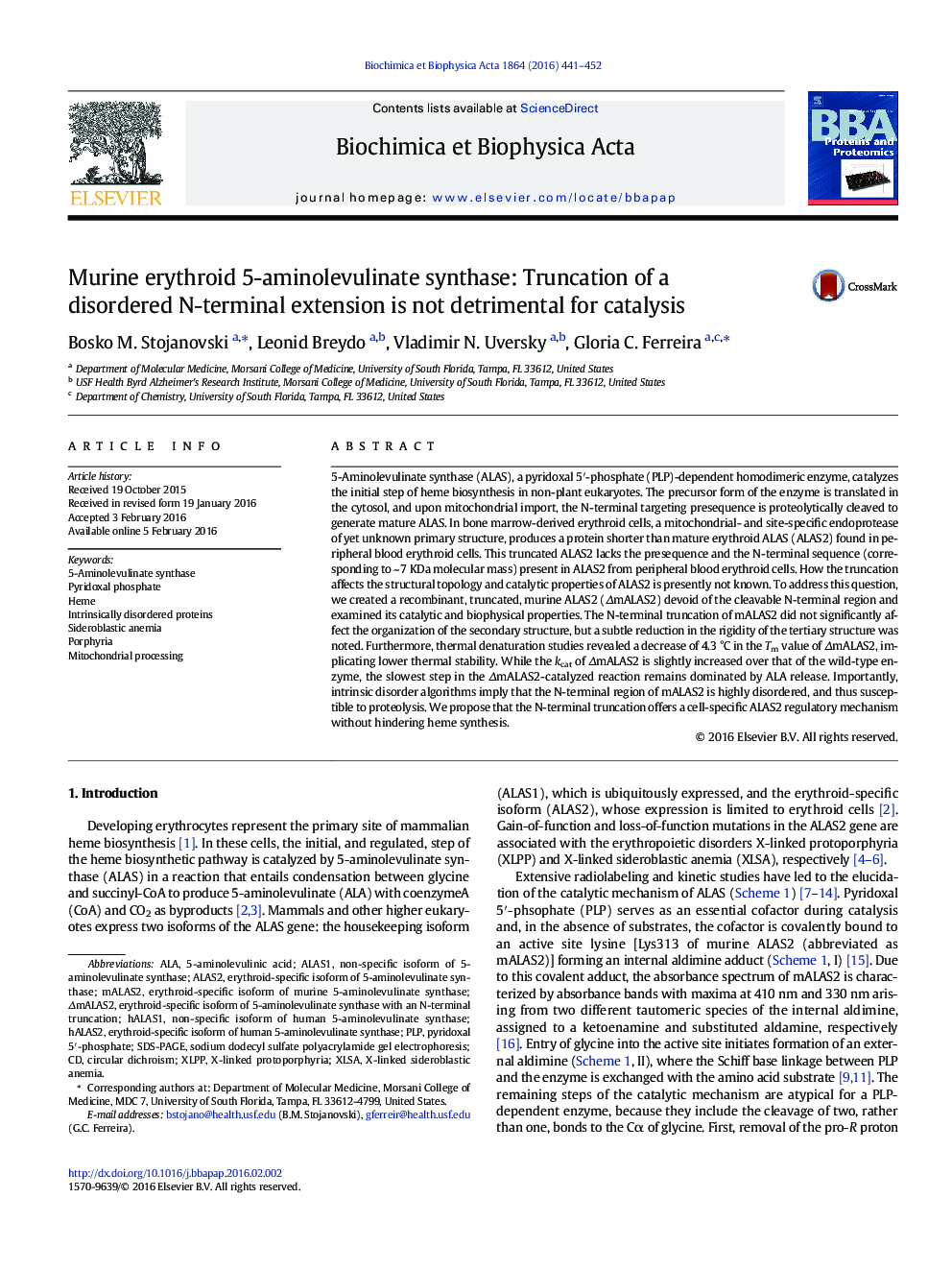| کد مقاله | کد نشریه | سال انتشار | مقاله انگلیسی | نسخه تمام متن |
|---|---|---|---|---|
| 1179162 | 962762 | 2016 | 12 صفحه PDF | دانلود رایگان |

• Intrinsically disordered regions were identified in the N-terminus of mALAS2.
• Truncation of the N-terminal region subtly reduced the tertiary structure rigidity.
• Thermal denaturation analyses revealed a 4.3 °C reduction in the Tm of ΔmALAS2.
• The steady-state kinetic properties of mALAS2 are largely unperturbed.
• The N-terminal truncation modulates the active site PLP microenvironment.
5-Aminolevulinate synthase (ALAS), a pyridoxal 5′-phosphate (PLP)-dependent homodimeric enzyme, catalyzes the initial step of heme biosynthesis in non-plant eukaryotes. The precursor form of the enzyme is translated in the cytosol, and upon mitochondrial import, the N-terminal targeting presequence is proteolytically cleaved to generate mature ALAS. In bone marrow-derived erythroid cells, a mitochondrial- and site-specific endoprotease of yet unknown primary structure, produces a protein shorter than mature erythroid ALAS (ALAS2) found in peripheral blood erythroid cells. This truncated ALAS2 lacks the presequence and the N-terminal sequence (corresponding to ~ 7 KDa molecular mass) present in ALAS2 from peripheral blood erythroid cells. How the truncation affects the structural topology and catalytic properties of ALAS2 is presently not known. To address this question, we created a recombinant, truncated, murine ALAS2 (ΔmALAS2) devoid of the cleavable N-terminal region and examined its catalytic and biophysical properties. The N-terminal truncation of mALAS2 did not significantly affect the organization of the secondary structure, but a subtle reduction in the rigidity of the tertiary structure was noted. Furthermore, thermal denaturation studies revealed a decrease of 4.3 °C in the Tm value of ΔmALAS2, implicating lower thermal stability. While the kcat of ΔmALAS2 is slightly increased over that of the wild-type enzyme, the slowest step in the ΔmALAS2-catalyzed reaction remains dominated by ALA release. Importantly, intrinsic disorder algorithms imply that the N-terminal region of mALAS2 is highly disordered, and thus susceptible to proteolysis. We propose that the N-terminal truncation offers a cell-specific ALAS2 regulatory mechanism without hindering heme synthesis.
Journal: Biochimica et Biophysica Acta (BBA) - Proteins and Proteomics - Volume 1864, Issue 5, May 2016, Pages 441–452